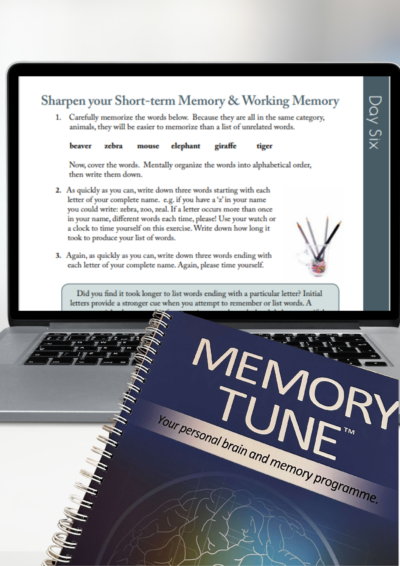Include these cross-over exercises in your daily routine. Your brain will love them!
1) Cross Body Contact – Work up to doing 20 a day
1. Stand with feet hip-distance apart.
2. Think of your body as a big ‘X’ – bring your hands up and out if you’d like.
3. Slowly bring one arm down and across while the opposite leg comes up to meet it. Twist the torso to get the most contact between the arm and opposite leg. Stay comfortable so as to not over-stretch, but be as engaged as possible. You can think of the dance “the twist” if that helps.
4. Change arm and leg. Remember to go slow because specific neurotransmitters are released, and integrated left and right brain hemisphere learning is better enabled. The slow crossover movement activates speech and language centres in the brain. Coordination and balance are improved, and over time this slow movement may become easier and easier.
5. Use some suitable music to keep a rhythm going.
2) Lazy 8s
1. Sit at a table with a blank piece of paper directly in front of you. Position the paper so it is wider parallel to you.
2. Place the tip of a pen or pencil right in the centre of the paper – It should also be right in the centreline of your body.
3. Draw with the pen or pencil first up and to the left. Circle down and around, coming to the middle again before going up and to the right. Circle down and around to the middle and repeat/re-trace the drawing beginning up and to the left. Repeat this at least three times, always starting up and to the left. Follow the pen or pencil tip with your eyes the whole time. End the drawing in the centre where you started. Your drawing should look like an infinity symbol.
Infinity 8s help the eyes move together and for the left and right hemispheres of the brain to integrate. This movement is relaxing and also a great way to keep the eyes muscles exercised.
Do Infinity 8s without eyeglasses.
3) Energize your brain
1. Sit in a chair, spread your legs comfortably and rest your hands on your knees
2. Bend your head and torso so that your head is between your knees – or as far down toward your knees as is comfortable.
3. Take a deep breath in. Exhale slowly as you slowly bring your torso up, one vertebrae at a time starting at the lowest point. Your head should be the last part to extend. Let your spine extend as far back as is comfortable as your fully exhale.
4. Repeat steps 2 and 3, two more times or as desired.
This exercise improves spinal mobility, flexibility, and relaxation. It also improves posture, concentration, attention and breathing.
And don’t forget to do the Stroop exercise!




